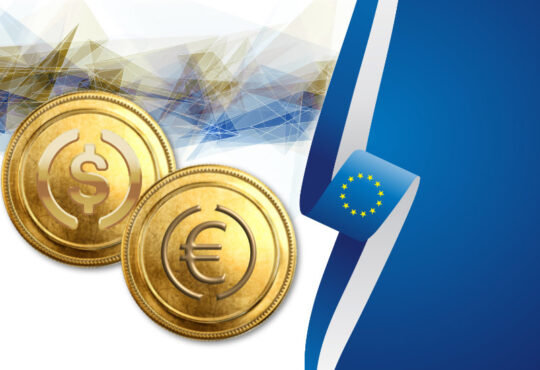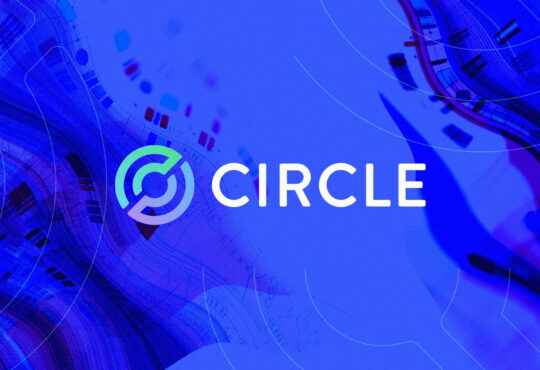
What’s better than earning 1 percent cash back? Bear with us here — earning 2% cash back! Credit cards earning 2% back on all purchases offer a simple, flat cash-back rate, without the need to track category spending or perform calculations to predict your reward earnings. While 1% or 1.5% back might once have seemed exciting, 2% percent cash-back cards have set a new standard when it comes to rewards.
We analyzed a broad swath of 2% cash-back cards, from a variety of issuers, to curate a list of the very best. Be sure to compare these cards to those on our lists of the best credit cards and best cash-back credit cards to view them outside of the context of this specific list. Though there are a wide range of cards included here, our list may not have the best card for your unique needs. Here are our selections
Best 2% cash-back cards of 2023
Compare the best credit cards for 2% cash-back cards
Best overall for 2% cash rewards: Wells Fargo Active Cash® Card
Card highlights
The saying goes that cash is king, and the Wells Fargo Active Cash Card is our pick for king of the 2% rewards cards. In addition to a healthy welcome bonus and easy-to-redeem rewards, the Active Cash comes with cellphone protection and solid intro APR periods on purchases and balance transfers.
Annual fee: $0.
Rewards: Earn 2% cash rewards on purchases (unlimited).
Welcome bonus: Earn a $200 cash reward bonus after spending $1,000 in purchases in the first three months.
Foreign transaction fees: 3%.
Other benefits and drawbacks: The card offers valuable cellphone protection. With this, you are entitled to up to $600 of cellphone protection against damage or theft when you pay your monthly bill with your eligible Wells Fargo card (subject to a $25 deductible). This can mean the difference between a new phone being stuck with your old, cracked one. Otherwise, the card’s benefits are pretty much limited to minor convenience and security perks.
Best for 2.5% cash back: Alliant Cashback Visa Signature® Credit Card
Card highlights
For those who spend $10,000 per month or less on a credit card, the Alliant Cashback Visa Signature Credit Card offers flat-rate value you’re unlikely to find anywhere else. At 2.5% cash back on the first $10,000 spent, this card offers the highest ongoing cash-back rate that we’re aware of with no category restrictions. Just know you must join the credit union to get the card (joining is fairly straightforward) and maintain Alliant High-Rate Checking with one electronic deposit per month, an average daily balance of $1,000 or more and electronic statements.
Annual fee: $0.
Rewards: Earn up to 2.5% cash back with no categories to track on up to $10,000 in purchases each billing cycle with qualifying accounts. All other purchases earn 1.5%.
Welcome bonus: None.
Foreign transaction fees: None.
Other benefits and drawbacks: The 2.5% bonus to the first 10,000 in spending works out to $250 in rewards per month. Depending on your spending habits, you may be able to exceed that number with consistent 2% cash back — but only if you’re spending quite a bit. The card also comes with a decent suite of benefits such as purchase security, travel accident insurance, auto rental collision damage waiver and extended warranty protection.
Best for no foreign transaction fees: SoFi Credit Card
Card highlights
If you already use SoFi — for instance, maybe you’ve refinanced your student loans with them, or use their platform to manage your crypto investments — it’s likely the SoFi Credit Card will integrate well into your financial life. But if you don’t use SoFi or have never heard of them before, this card might not be the right choice for you. The best value per point is obtained by redeeming your credit card rewards to a SoFi Invest Account, a SoFi Money Account, SoFi checking or savings, or toward an outstanding balance on a SoFi student or personal loan.
You can redeem points for statement credits, but they’re worth just half a cent that way.
Annual fee: $0.
Rewards: 2 points per dollar spent.
Welcome bonus: Earn 3 points per dollar spent in the first year (up to a maximum of 36,000 points) when you have qualifying direct deposits set up. Plus, new cardholders who open a SoFi checking and savings account and set up qualifying direct deposits can earn a bonus worth up to $250 — a $50 bonus for deposits of $1,000 to $4,999.99 and the full $250 for deposits of $5,000 or more. Deposits must occur within 25 days.
Foreign transaction fees: None.
Other benefits and drawbacks: Cellphone protection when you pay your bill with this card, monthly $5 Lyft credits, free ShopRunner membership, three-month free DashPass trial.
Best for TD clients: TD Double Up℠ Credit Card
Card highlights
The TD Double Up Credit Card earns 1% cash back on purchases and an additional 1% back when rewards are redeemed into an eligible TD Bank Deposit Account. This less-than-ideal structure requires more effort than a card that earns 2% with no requirements. If you are brand loyal to TD bank, this card will probably be a decent option for you. If not, look elsewhere.
Annual fee: $0.
Rewards: Earn 1% cash back on purchases and an additional 1% cash back when you redeem into an eligible TD Bank Deposit Account.
Welcome bonus: Earn a $100 statement credit when you spend $1,000 on purchases within the first 90 days after account opening.
Foreign transaction fees: 3%.
Other benefits and drawbacks: The TD Double Up Credit Card comes with a solid array of benefits, including cellphone protection, purchase security, extended warranty protection, travel and emergency assistance services and lost luggage reimbursement. Additionally, cardholders get three months of free Skillshare membership plus 20% off an annual membership—as well as three months of free Shipt membership with 50% off for the following nine months, plus free delivery on orders over $35. With these benefits all in one place, the TD Double Up Card is a great option if you bank with TD and redeem rewards to your eligible TD Bank Deposit Account.
Best for regular PayPal users: PayPal Cashback Mastercard®
Card highlights
The PayPal Cashback Mastercard‘s bonus category — 3% cash back when you check out with PayPal — isn’t likely to be helpful to most users, but for those with consistent PayPal transactions, the card may be worth making your daily driver.
Annual fee: $0.
Rewards: Earn 3% cash back when you check out with PayPal, 2% cash back on all other purchases.
Welcome bonus: None.
Foreign transaction fees: 3%.
Other benefits and drawbacks: The primary benefit the PayPal Cashback Mastercard offers to regular PayPal users is the ease of accessing your credit card rewards via your PayPal account. So, if you use PayPal frequently to buy and sell, this could be an enticing perk. Rewards don’t expire, but otherwise the card doesn’t offer much beyond its digital convenience benefits.
Best for PenFed Credit Union members: PenFed Power Cash Rewards Visa Signature® Card
Card highlights
The PenFed Power Cash Rewards Visa is a 2% cash-back card, but unlike many in the category, you have to be a PenFed Honors Advantage Member in order to receive the full 2%. If you don’t meet that requirement, the card earns 1.5% cash back on all purchases.
Annual fee: $0.
Rewards: Earn 2% cash back for PenFed Honors Advantage Members, 1.5% cash back on all purchases otherwise.
Welcome bonus: Earn a $100 statement credit when you spend $1,500 on purchases within the first 90 days after account opening.
Foreign transaction fees: None.
Other benefits and drawbacks: The PenFed Power Cash Rewards Visa has few extra benefits beyond its convenience and digital wallet features — but with no foreign transaction fees and the fact that it’s on the Visa payment network, which is widely accepted both domestically and internationally, this card is a fine choice if you’re planning a trip abroad.
Best for balance transfers: Citi® Double Cash Card
Card highlights
The Citi® Double Cash Card is an excellent option for those looking to tackle large debt from another card and earn great rewards after paying off the balance transfer. It features an introductory 18-month 0% APR balance transfers, making it an industry-leader among credit card debt consolidation options. After, an 18.49% – 28.49% variable APR applies. There’s a balance transfer fee of 3% ($5 minimum) for the first four months, 5% ($5 minimum) after.
Annual fee: $0.
Rewards: Earn 2% unlimited cash back—1% cash back when you make a purchase and an additional 1% cash back when you pay for the purchase.
Welcome bonus: None.
Foreign transaction fees: 3%.
Other benefits and drawbacks: Apart from fairly standard convenience benefits, the card offers access to the Citi Entertainment program, which provides premier access to tickets for upcoming events.
Best for investing: Fidelity® Rewards Visa Signature® Credit Card
Card highlights
The Fidelity Rewards Visa Signature makes it easy to turn your credit card rewards into investments, since you can redeem what you earn into eligible Fidelity accounts such as IRAs and 529 college savings plans. However, if you’re not already invested with Fidelity, this card might not be a good fit — rewards have less value when redeemed in other ways.
You’ll also want to leave this card at home if traveling abroad. The 1% foreign transaction fee is less than the 3% that some cards charge, but a no-foreign-transaction-fee option is even better.
Annual fee: $0.
Rewards: 2% cash back on every eligible net purchase.
Welcome bonus: None.
Foreign transaction fees: 1%.
Other benefits and drawbacks: Purchase security, roadside dispatch, lost luggage reimbursement. Plus, there’s an opportunity to boost your rewards rate to 2.25%, 2.5% or 3% cash back through the Fidelity Rewards+® program for Wealth Management clients. However, note that this requires a minimum of $250,000 in eligible assets, so might be difficult to achieve.
What does 2% cash back mean?
A 2% cash-back card offers cardholders an opportunity to earn rewards in the form of cash back to the tune of 2% of every eligible purchase. Typically, cards labeled “2% cash-back cards” offer that rewards rate on all eligible purchases. Some rewards cards may offer 2% cash back in a specific category or set of categories often known as “bonus categories,” but a true 2% cash-back card offers a flat rate on all purchases.
Some of the redemption options often available on cash-back cards include statement credits to reduce what you owe on your card (though this usually can’t be used to cover the minimum monthly payment), as a deposit to a checking account or investment account or in exchange for gift cards from a variety of merchants. Note that the redemption options you have available will depend on your specific credit card’s rewards agreement.
Pros and cons of a 2% cash back card
The main advantage of a 2% cash-back card is an excellent rewards rate without having to keep track of varying card rates in different categories.. Some 2% cash-back cards also offer a welcome bonus and a handful of additional benefits and the best 2% cash-back cards charge no annual fee.
Few 2% cards offer additional perks beyond standard convenience benefits, so consumers looking for additional credit card benefits, such as airport lounge access, travel credits or other protections, will do better with a premium travel rewards card.
Flat-rate rewards cards also don’t offer much in terms of incentives for additional rewards potential, the simplicity is what makes them attractive. However, without bonus rewards categories, you sacrifice the chance to maximize your earnings if you spend heavily on a particular category. For example, someone who spends heavily on groceries can earn up to 5% or even 6% cash back with the right card, compared to 2% back with a flat-rate card.
How to compare 2% cash-back credit cards
When comparing 2% cash-back cards, it’s important to look closely at each rewards program. Some points may expire while others don’t. Some cards may offer several redemption methods, while others may simply automatically redeem your points as a statement credit. With multiple redemption opportunities may come increased (and likewise, decreased) redemption value. For example, your rewards may be worth less when redeemed for gift cards or merchandise compared with being deposited into an eligible account.
Benefits can also make a big difference with 2% cash-back cards. While some cards may provide only convenience benefits, others may provide additional perks such as travel insurance or cellphone protection. The value of these benefits should be carefully weighed against any fees or additional costs associated with the card.
Introductory APRs offer opportunities to finance large purchases or make balance transfers to a 2% cash-back card. Carefully read all terms and conditions around intro APRs and ensure you understand exactly how and when you must make payments to avoid accruing interest. Balances must be paid off by the end of any introductory period and not paying the minimum payments each month can invalidate the introductory APR and cause interest to accrue.
If taking advantage of a balance transfer offer, we recommend not using the card for purchases until you’ve paid off the transferred debt. Making purchases on top of a balance transfer can cause debt to grow out of control and defeat the purpose of doing the transfer in the first place.
Fees, APR and other terms of each card you evaluate should be carefully considered before applying. Some terms may not be as favorable to the cardholder — such as penalty APRs or foreign transaction fees. Be sure to understand all terms before you submit that application.
Why you might choose a 2% cash-back card
A 2% cash-back card can be a great option for those looking to earn a straightforward rewards rate across all categories. For many, the simplicity of not having to worry about different earning categories may be attractive.
And for others, a 2% cash-back card might be paired with one or more other rewards cards that earn in bonus categories. In that case, spending that earns an elevated rate on one of the other cards — for example, gas or groceries — would go on that card, and all other spending would be put on the 2% cash-back card for a strong base earning rate.
Whatever your reasoning, a good 2% cash-back card deserves a place in your wallet.
Methodology
Our team has spent hours analyzing hundreds of credit cards. We took a deep dive into the details of each product and that analysis, combined with our years of experience covering credit cards, informed us as we developed these credit card rankings.
Factors evaluated included flexibility of rewards and redemption options, whether there are any strings attached on earning rewards, how accessible the issuing institution is, foreign transaction fees, intro APR periods, benefits such as cellphone protection and more.
Frequently asked questions (FAQs)
Yes, 2% cash back is an excellent flat-rate rewards rate. Higher earning rates are possible if your spending habits fit well into the structure of another rewards card — but a 2% cash-back card is good for a consistent rate on all spending or as a catchall card for purchases that don’t fit into a bonus category on any other rewards cards you carry.
Double cash on a credit card typically means that you will earn 2% cash back on all eligible purchases. The phrase likely originates with the Citi Double Cash, one of the industry’s first and most famous 2% cash-back cards. With the Citi Double Cash, rewards are earned in two steps — 1% back when making the purchase and 1% back when paying your balance.
A 2.5% cash-back card is a type of credit card that gives you 2.5% cash back on eligible purchases. Few cards offer this, and those that do typically maintain a cap on these rewards and may have additional requirements that must be met in order to qualify for the 2.5% rate.






